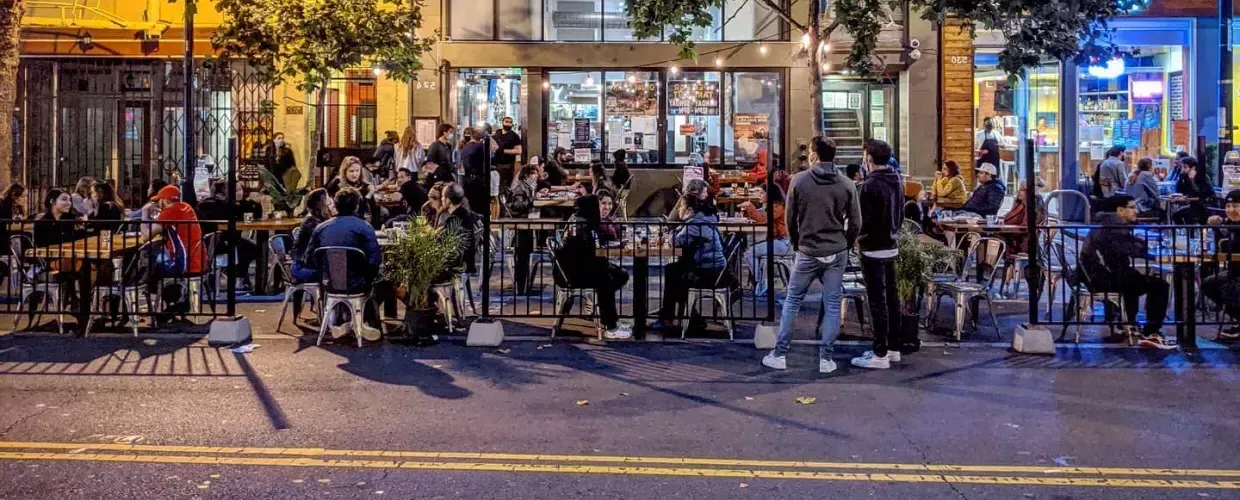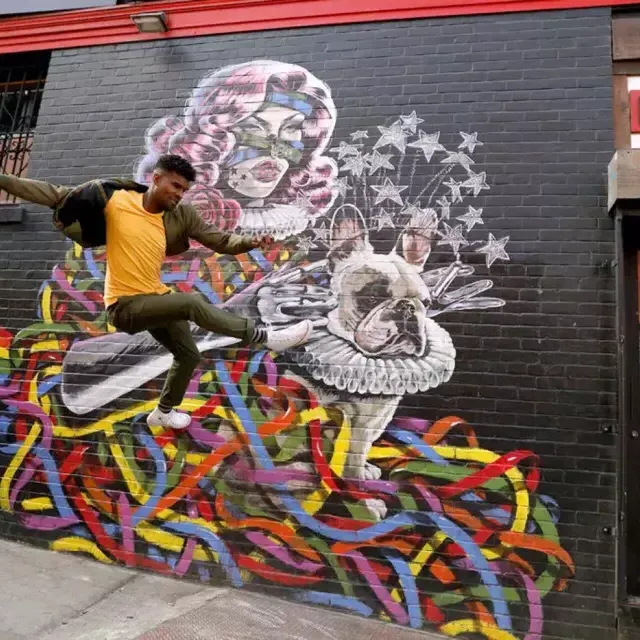
Heart of the CityChinatown
If you think you know San Francisco’s Chinatown, think again. Exciting new community spaces are giving visitors more reasons to explore.
It’s one of San Francisco’s most well-known and most visited neighborhoods; but the Chinatown of today is so much more than what you might remember, imagine, or assume.
Pairing a respect for the past with an enthusiasm for the future, Chinatown’s business owners are redefining their neighborhood, creating new experiences, and welcoming new types and generations of people to this heart of the city.
Chinatown

Protecting A Legend
Steven Lee is about as big an advocate for San Francisco as you can find. In both his business interests and as a member of as many commissions, associations, and task forces he can find the time for, Steven works to preserve the institutions that make San Francisco unique.
Among those is Sam Wo, a restaurant in Chinatown that is now over 100 years old. For Steven, Sam Wo was the go-to spot for a late night meal after a night on the town. Once he became part of the ownership group, he learned just how much Sam Wo meant to so many others.
“We almost lost it,” he recalls. When Sam Wo’s temporary closure was announced in the San Francisco Chronicle, something remarkable happened. “People came out for the last three days, [from] 10 in the morning to 3 a.m.,” Steven says. “The lines were around the block, up the hill. They would wait for 5 hours just to get a seat.” He remembers meeting one woman who drove in from Sacramento with her children because, as she told him, Sam Wo was where her father took her to learn to use chopsticks.
“That’s when I go, “Wow, this restaurant must mean something to the community.”
Today, Sam Wo is still serving up the same recipes for chow mein, chow fun, rice plates, and wonton soup that have enamored visitors and locals alike for five generations.

Did You Know?
Sam Wo gained notoriety for employing Edsel Ford Fong, a man proudly known as “the world’s rudest waiter.” “He would kiss your wife. He would tell you to go pick up your own food,” says Steven, with a laugh. “That was his whole game.” Edesl’s antics were memorialized by local writers, including Herb Caen and Armistead Maupin.
Reigniting A Legacy
Like Steven, Calvin Louie and Cliff Banayat have fond memories of nights out in Chinatown; but as their old haunts closed and city zoning laws changed, they grew concerned that the neighborhood was losing an essential part of its charm.
Working with Steven, they opened Lion’s Den, Chinatown’s first new nightclub in almost 50 years. “This was an opportunity…to bring new people that never stepped foot in Chinatown to party,” says Cliff.
Each week, the trio see more and more people coming through the doors, attracted by both the wide variety of musical acts that Cliff books and by the apparent novelty of the location. In truth, Lion’s Den is a reawakening of the neighborhood’s great nightlife tradition. Check out the photos that adorn the walls, showcasing the singers, showgirls, and celebrities who once made Chinatown the place to party.
“I was born and raised in San Francisco’s Chinatown,” says Calvin. “I never left. So, I always wanted to make sure that it stays vibrant.”
Imagining Possibilities
Sisters Cynthia and Jennifer Huie were no strangers to running a small business in San Francisco. Their first establishment in the Inner Richmond was a big success. When the opportunity to start a new venture in Chinatown presented itself, they jumped at it.
“We wanted to see what would happen when we started bringing artists, authors, and creative energies together in Chinatown,” says Cynthia.
The result was On Waverly, their shop that sells books, gifts, accessories, and more items that are created almost entirely by makers of Asian or Pacific Islander descent.
The shop serves as more than just a retailer. The Huie sisters are keen on making On Waverly into a neighborhood gathering place. “We are really becoming a new living room for Chinatown,” says Jennifer.
By stocking the shelves with items that celebrate and commemorate both neighborhood culture and local talent, the Huie sisters wanted to create a place where the welcoming vibes flowed in both directions.
“There’s something really special when you walk into a space that is centered around your experience,” says Cynthia. “It feels like a layer of yourself doesn’t have to be explained.”
That’s not to say that On Waverly is in any way exclusionary. "We have people of all ages, all walks of life, from different parts of the world coming in every day,” says Jennifer.
Cynthia adds, “We’re able to capture this sense of community, creativity, joy—all these different things that people somehow just seem to feel when they walk through the shop.”
The Heart of the City
How would these Chinatown leaders define their heart of the city?
“Chinatown is about the people,” says Steven. “They’re the ones who helped build America.”
Cynthia agrees. “I think Chinatown is very important to our American story,” she says. “We get to have a diverse, wonderful, lovely country full of all different people from all over the world.” As one of the oldest, largest, and most successful immigrant communities in the U.S., “Chinatown was pivotal in making that possible for everybody.”
That history is not without its blemishes. The first generations of Chinese immigrants to America were treated with suspicion and discrimination—if they were allowed to pursue the American Dream at all.
“I think we have to understand our histories,” says Cynthia. “We have to…look into the past to be able to move forward.”
She continues: “I think this is a place that’s very important to preserve and evolve for everybody. It’s not about preserving it like a diorama in a museum. It’s not stagnant. It’s about respecting the past but building on top, using it as a foundation.”
Chinatown may be a place of business for these folks, but it remains as exciting to them as it does to visitors.
“Everywhere you look [in San Francisco] is a beautiful view; no place more so than Chinatown,” Cynthia says. “I want to take a photo here every single day.”
“There’s just so much packed into each street, all the alleyways,” says Jennifer. “You can see the different layers of history.”
Thanks to people like Steven, Calvin, Cliff, Cynthia, and Jennifer, the next chapter of Chinatown’s history will certainly not be its last.

Where to Eat in Chinatown
You’re bound to work up an appetite exploring every corner of Chinatown. Here are just a few of the neighborhood’s best places for authentic, incredible dining.
Let's Eat












